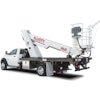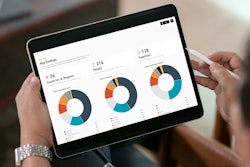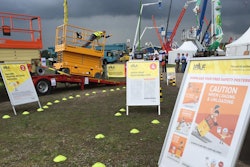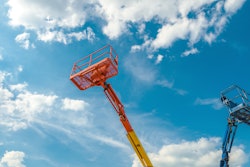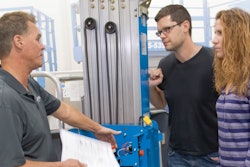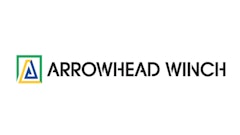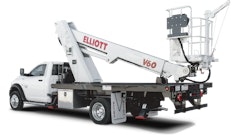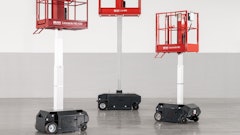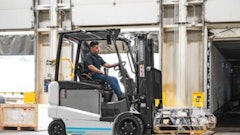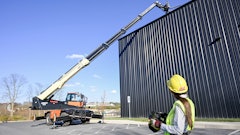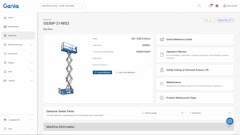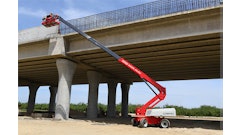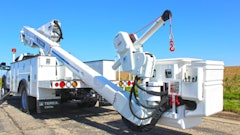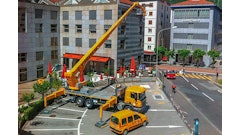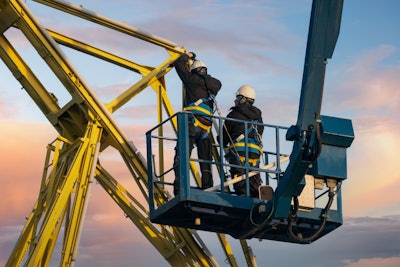
Despite reports increasing over the past year, the fatality rates of the leading types of accidents have declined: an encouraging sign that collective action across the powered access industry to tackle key underlying causes of accidents is starting to take effect, according to the latest report from the International Powered Access Federation (IPAF) based on analysis of incidents logged through its Accident Reporting Portal.
Launched via webinar on 28 June, the IPAF Global Safety Report 2023 analyses the latest data collected via the IPAF portal covering the period 2013-23, focusing particularly on year-on-year trends to identify how well the industry is doing in tackling the key causes of accidents involving powered access.
While mobile elevating work platforms (MEWPs), mast-climbing work platforms (MCWPs) and construction hoists are statistically among the safest ways to work at height, this year’s report shows that in 2022 there were 759 reports of safety incidents from 34 countries, up 15 percent and 21 percent, respectively. There were 831 people involved, and 102 deaths reported, a decline of around 19 percent on 2021, when there were 126 fatalities.
In terms of incidents resulting in deaths or major injury, falls from the platform remained the most common underlying cause, with overturns second. Hit by machine, vehicle or object was third, entrapment fourth and electrocution or electric shock fifth. Mechanical failure was joint seventh with falls from height (no machine involved) – a notable reduction following a spike in reported incidents across 2021.
In 2022, the main sectors from which reports were received were rental activity, construction, and facilities management. There were 45 fatalities and 39 major injuries in construction, a decrease in the number of fatalities reported in 2021, when there were 55 deaths. In facilities management there were 15 fatalities, down on 2021, and rental activity saw three fatalities in 2022, the same as in 2021, and 19 major injuries. The top MEWP categories involved were 3a-type machines with 217 incidents (26 percent), followed by 3b types on 197 (24 percent) and 1b vehicles on 152 (18 percent). Compared to 2021, 3a MEWPs saw 60 more reports, to replace 3b machines for the most reports.
“When we look at the data from 2022 and the key trends and annual changes, there are some encouraging sign," said Brian Parker, IPAF's head of safety and technical. "For one, reporting has increased, both in terms of the number of reports received in total and countries reporting; up from 692 reports from 28 countries in 2021 to 831 (and counting) from 34 countries worldwide in 2022.There are now more countries where IPAF members are mandated to report all incidents into the portal, and the three countries where it is a requirement of membership have seen increased reporting over the past three years. Reporting companies can also benefit from new dashboards to benchmark safety performance."
Parker continued:
“It is not yet possible to directly measure the impact of industry safety campaigns and the introduction of new safety and technical guidance or updates to training. But it is nonetheless encouraging to think campaigns such as IPAF’s Don’t Fall for It! or High Voltage! along with key technical guidance documents may have helped to save lives or reduce the risk of accidents leading to life-changing injury since being published.”
“IPAF continues to empower all operators and supervisors to report incidents quickly, easily and, if so wished, anonymously via its ePAL app," said Peter Douglas, CEO & Managing Director of IPAF. "We hope this unlocks widespread reporting of accidents, as well as minor and near-miss incidents that often go under-reported."
Mark Keily, SHEQ Director at Sunbelt Rentals Ltd and Chair of IPAF’s ISC, added: “We can never be complacent. Even while, statistically speaking, our industry becomes safer year on year, we cannot accept that accidents will happen when using powered access equipment. We hope that by highlighting the sometimes stark warnings that the analysis in the report raises, we can pull together to shift the dial on safety awareness. We all must keep banging the drum for better and wider incident reporting worldwide, including minor incidents and near misses, which we know are so very valuable for helping analyze trends and preventing the more serious accidents occurring.”

